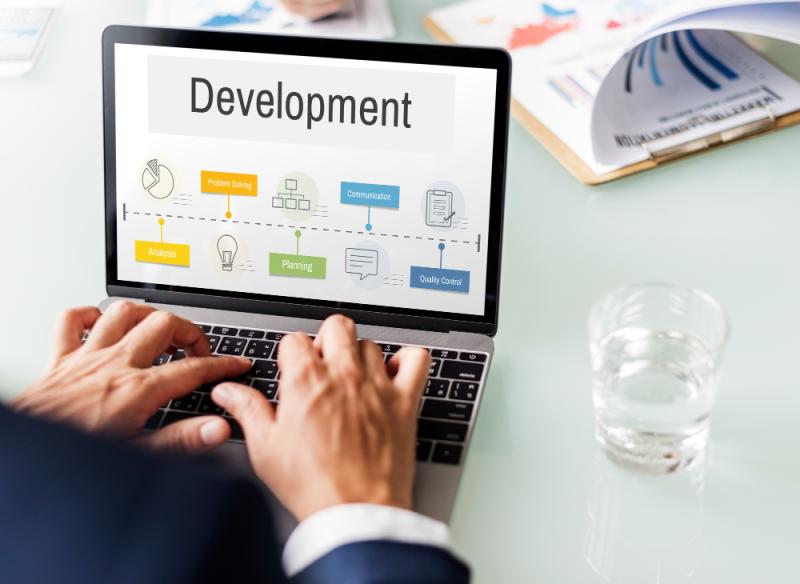Key Stages of the Product Development Life Cycle

The Product Development Life
Cycle (PDLC) refers to bringing a new product from an idea to market.
Understanding the key stages in this life cycle is critical for businesses
aiming to create successful products. Each phase plays a pivotal role in
ensuring the product is well-designed, market-ready, and able to meet customer
expectations. Here's an in-depth look at the key stages of the product development life cycle and how they contribute to product success.
1. Ideation and Concept Development
The first stage of the PDLC
begins with the ideation phase, where the foundation of the product is
established. During this stage, businesses generate, evaluate, and refine
ideas. Brainstorming sessions, market research, and innovation workshops are
everyday activities that help identify potential product opportunities.
Once viable ideas are selected,
they move into concept development, where the initial product idea is
outlined in more detail. The goal is to create a conceptual product vision that
addresses the identified problem or market need. This phase often includes
defining the product's core features, target audience, and value proposition.
Key Activities:
·
Brainstorming and idea generation
·
Market research to identify gaps or
opportunities
·
Defining product concepts and value propositions
2. Research and Feasibility Analysis
After developing the initial
concept, the next step is research and feasibility analysis. In this
stage, businesses validate whether the idea is technically and commercially
feasible. This involves researching market trends, assessing customer demand,
and conducting technical evaluations to determine if the product can be
developed within budget and time constraints.
A thorough feasibility analysis
helps businesses avoid costly mistakes by identifying potential risks and
obstacles early on. This is also when companies begin assessing potential
manufacturing or development costs.
Key Activities:
·
Market trend analysis
·
Customer demand evaluation
·
Technical feasibility assessments
·
Cost and budget forecasting
3. Design and Prototyping
With a clear understanding of the
product's feasibility, the project enters the design and prototyping phase.
This is where the conceptual product is translated into a tangible design.
Product designers and engineers collaborate to create sketches, wireframes, or
blueprints, focusing on functionality and aesthetics.
Once the design is finalized, prototypes
are developed to test the product's look, feel, and usability. Prototyping
allows teams to identify flaws or areas for improvement before moving on to
full-scale production. Early-stage prototypes may be rudimentary, but later
versions are more refined and may closely resemble the final product.
Key Activities:
·
Product design (aesthetic and functional)
·
Building of prototypes (early and refined
versions)
·
Testing and iterative improvements based on
feedback
4. Development and Testing
The development stage is
when the actual product is built. This involves collaborating with developers,
manufacturers, or suppliers to create a market-ready product version. During
development, businesses may need to refine technical specifications, integrate
necessary technologies, and optimize the product for scalability.
Simultaneously, rigorous testing
is conducted to ensure the product meets quality standards. Different types of
testing, such as user testing, functional testing, and performance testing, are
applied to identify any issues or bugs. Addressing these problems before the
product's official launch is critical to ensure good customer experiences.
Key Activities:
·
Complete product development (software coding or
physical manufacturing)
·
Quality assurance testing (user experience,
functionality, etc.)
·
Debugging and final improvements
5. Launch and Market Introduction
After the product passes testing
and refinement, the next stage is the product launch and market introduction.
This is where the product is officially made available to consumers. During
this stage, marketing teams ramp up efforts to promote the product through
advertising, public relations, and digital marketing strategies.
A successful product launch often
involves a well-planned go-to-market strategy. It is essential to time the
launch correctly, ensuring that the product reaches the target audience
immediately. During this phase, businesses gather initial customer feedback to
measure the product's early performance and adjust their marketing or
distribution strategies accordingly.
Key Activities:
·
Product launch planning and execution
·
Marketing and promotional activities
·
Collecting early customer feedback for
refinement
6. Post-launch evaluation and Product
Improvement
Even after the product is
launched, the development cycle still needs to be completed. The post-launch
evaluation phase focuses on tracking product performance in the real world.
This involves monitoring customer reviews, collecting sales data, and analysing
user behaviour to understand how the product is performing.
Businesses should be ready to adjust
based on this feedback. This could include fixing bugs, improving features, or
introducing new product versions. The product improvement process is
ongoing and ensures that the product remains competitive in a constantly
evolving market.
Key Activities:
·
Tracking sales and customer satisfaction
·
Gathering user feedback and reviews
·
Implementing product updates or improvements
Conclusion
Understanding and effectively
managing the critical stages of the Product Development Life Cycle is essential
for creating a successful product. From initial ideation to post-launch
evaluation, each stage shapes a product that meets business goals and customer
expectations. By following a structured PDLC, companies can reduce risks,
optimize costs, and bring valuable, market-ready products to consumers.
Comments